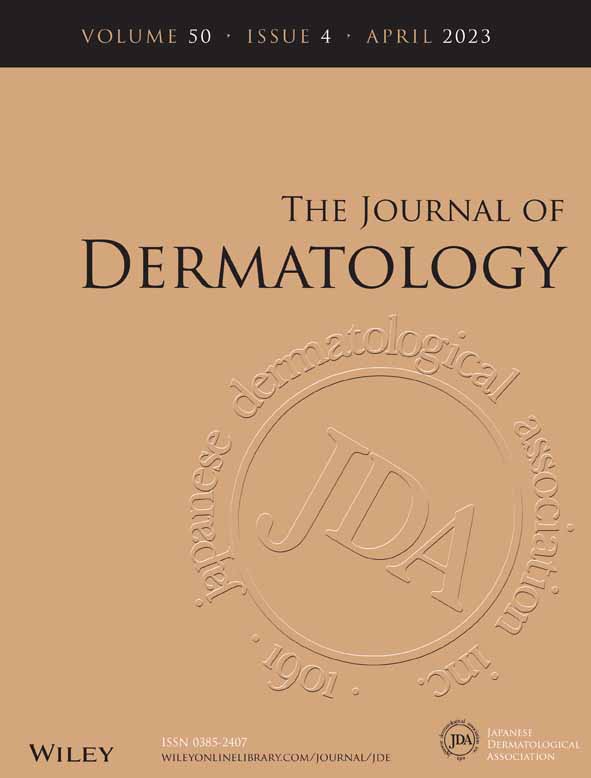A possible role for second-hit postzygotic GJB2 mutation in porokeratotic eccrine ostial and dermal duct nevus
Yi-Han Chang and Hsing-San Yang contributed equally to this study.
Abstract
Porokeratotic eccrine ostial and dermal duct nevus (PEODDN) is a rare type of epidermal nevus involving the eccrine acrosyringia. It typically presents as asymptomatic linear keratotic papules and plaques along the lines of Blaschko and predominantly affects the extremities. This disease has recently been linked to somatic mutations within the GJB2 locus. Only four GJB2 mutations have been previously documented for PEODDN, and the underlying genetic basis remains inconclusive. Herein, we report an 18-year-old female with a hyperkeratotic plaque on the dorsa of the proximal interphalangeal joint of her right ring finger, as well as multiple small hyperkeratotic papules linearly distributed on the lateral sides of her fingers occurring since birth. Histopathological results revealed prominent parakeratotic cornoid lamella-like tiers at the opening of the eccrine secretory ducts. Whole-exome sequencing of the affected skin tissue revealed a heterozygous germline mutation and a postzygotic somatic mutation in GJB2. In summary, this study presents a case of PEODDN with compound heterozygous mutations in GJB2, which broadens the genetic spectrum of this disease entity and implies a possible role for second-hit mutations in the pathogenesis of PEODDN.
CONFLICT OF INTEREST
None.




